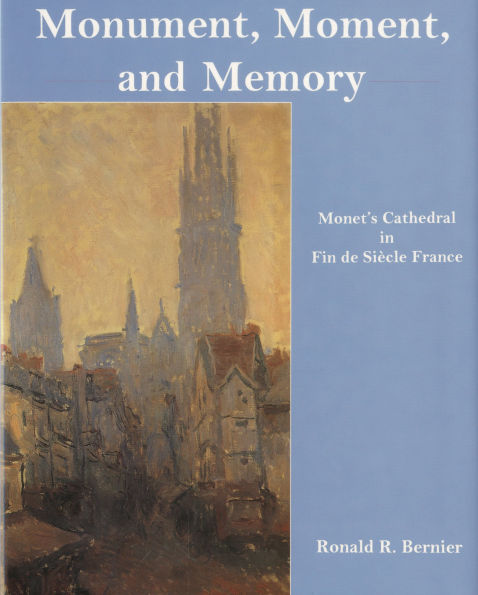Monument, Moment, and Memory: Monet's Cathedral in Fin-de-Siècle France
By the end of the nineteenth century, a mode of painting that captured 'instantaneity' had come to be seen as an appropriate and characteristically Impressionist means of depicting its subject, when that subject was understood to be our variable perception in nature. In May of 1895, however, Monet turned capriciously it seemed to some, to the immutable façade of a Gothic cathedral. Struck by the curious choice of a medieval monument as subject matter, critics, used to talking about 'instantaneity,' continued to lay emphasis on the theme of temporality, and this was addressed in two distinct but related ways. First, there was the matter of perception - the temporality that is involved in engaging visually with the near impenetrable surfaces of individual canvases, suggesting the dense complexity - the nuances - of our 'momentary' perception. Then, there was the temporality involved in the real historical character of the motif itself; an awareness of the persistence of memory embedded in the medieval edifice and its significations of history and nation. It is the critical discourse and its complex negotiations - aesthetic, philosophical, and literary - that this book examines.
1119276447
Monument, Moment, and Memory: Monet's Cathedral in Fin-de-Siècle France
By the end of the nineteenth century, a mode of painting that captured 'instantaneity' had come to be seen as an appropriate and characteristically Impressionist means of depicting its subject, when that subject was understood to be our variable perception in nature. In May of 1895, however, Monet turned capriciously it seemed to some, to the immutable façade of a Gothic cathedral. Struck by the curious choice of a medieval monument as subject matter, critics, used to talking about 'instantaneity,' continued to lay emphasis on the theme of temporality, and this was addressed in two distinct but related ways. First, there was the matter of perception - the temporality that is involved in engaging visually with the near impenetrable surfaces of individual canvases, suggesting the dense complexity - the nuances - of our 'momentary' perception. Then, there was the temporality involved in the real historical character of the motif itself; an awareness of the persistence of memory embedded in the medieval edifice and its significations of history and nation. It is the critical discourse and its complex negotiations - aesthetic, philosophical, and literary - that this book examines.
91.0
Out Of Stock
5
1

Monument, Moment, and Memory: Monet's Cathedral in Fin-de-Siècle France
112
Monument, Moment, and Memory: Monet's Cathedral in Fin-de-Siècle France
112
91.0
Out Of Stock

Product Details
| ISBN-13: | 9781611482751 |
|---|---|
| Publisher: | Bloomsbury Academic |
| Publication date: | 08/01/2007 |
| Pages: | 112 |
| Product dimensions: | 8.60(w) x 11.10(h) x 0.50(d) |
About the Author
From the B&N Reads Blog
